Efficient Underwater Sensor Data Recovery Method for Real-Time Communication Subsurface Mooring System
Abstract
1. Introduction
2. Design of Real-Time Communication Subsurface Mooring System
2.1. General Descriptions of the Real-Time Communication System
2.2. Hydrodynamic Analysis of SCB
2.3. System Hardware Circuit Design
2.3.1. Satellite Communication Buoy (SCB)
2.3.2. Conductivity–Temperature–Depth Sensor (CTD)
2.4. System Software Design
3. Efficient Data Recovery Strategy Design
4. Sea Experiment
5. Conclusions
Author Contributions
Funding
Institutional Review Board Statement
Informed Consent Statement
Data Availability Statement
Acknowledgments
Conflicts of Interest
Abbreviations
| OII | Ocean Observation Initiative |
| TCBS | Timed Communication Buoy System |
| ACF | Autonomous Communication Float |
| SCB | Satellite Communication Buoy |
| TD | Temperature–Depth sensor |
| CTD | Conductivity–Temperature–Depth sensor |
| CTD-IM | Conductivity–Temperature–Depth sensor with an Inductive Modem |
| HYCOM | HYbrid Coordinate Ocean Model |
| WOA | World Ocean Atlas |
References
- Arrott, M.; Chave, A.D.; Farcas, C.; Farcas, E.; Kleinert, J.E.; Krueger, I.; Meisinger, M.; Orcutt, J.A.; Peach, C.; Schofield, O. Integrating marine observatories into a system-of-systems: Messaging in the US Ocean Observatories Initiative. In Proceedings of the OCEANS 2009, Miloxi, MS, USA, 26–29 October 2009; pp. 1–9. [Google Scholar] [CrossRef]
- Howe, B.M.; Angove, M.; Aucan, J.; Barnes, C.R.; Barros, J.S.; Bayliff, N.; Becker, N.C.; Carrilho, F.; Fouch, M.J.; Fry, B.; et al. SMART Subsea Cables for Observing the Earth and Ocean, Mitigating Environmental Hazards, and Supporting the Blue Economy. Front. Earth Sci. 2022, 9, 775544. [Google Scholar] [CrossRef]
- Wang, F.; Wang, J.; Xu, L.; Zhang, X.; Yan, S.; Chen, Y. The development of a new real-time subsurface mooring. J. Oceanol. Limnol. 2020, 38, 1080–1091. [Google Scholar] [CrossRef]
- Howe, B.M.; Chao, Y.; Arabshahi, P.; Roy, S.; McGinnis, T.; Gray, A. A Smart Sensor Web for Ocean Observation: Fixed and Mobile Platforms, Integrated Acoustics, Satellites and Predictive Modeling. IEEE J. Sel. Top. Appl. Earth Obs. Remote Sens. 2010, 3, 507–521. [Google Scholar] [CrossRef]
- Send, U.; Fowler, G.; Siddall, G.; Beanlands, B.; Pittman, M.; Waldmann, C.; Karstensen, J.; Lampitt, R. SeaCycler: A Moored Open-Ocean Profiling System for the Upper Ocean in Extended Self-Contained Deployments. J. Atmos. Ocean. Technol. 2013, 30, 1555–1565. [Google Scholar] [CrossRef]
- Carlson, D.F.; Ostrovskii, A.G.; Kebkal, K.; Gildor, H.; Gal, O. Moored automatic mobile profilers and their applications. In Advanced in Marine Robotics; LAP LAMBERT Academic Publishing: Sunnyvale, CA, USA, 2013; pp. 169–206. [Google Scholar]
- Nichols, J.; Leslie, D.; Soylu, S.; Crees, T.; Woodroffe, A.; McLean, S. Imotus: An autonomous underwater resident vehicle for vertical profiling. In Proceedings of the OCEANS 2018 MTS/IEEE Charleston, Charleston, SC, USA, 22–25 October 2018; pp. 1–5. [Google Scholar]
- Tian, C.; Deng, Z.D.; Xu, X.; Yang, Q.; Zhao, W. Timed Communication Buoy System: A Subsurface Mooring System for Efficient Sensor Data Recovery. Mar. Technol. Soc. J. 2015, 49, 117–126. [Google Scholar] [CrossRef]
- Xu, M.; Tian, J.; Zhao, W.; Yang, Q.; Tian, C. An improved timed communication buoy system. Mar. Technol. Soc. J. 2017, 51, 23–30. [Google Scholar] [CrossRef]
- Alford, M.H.; McGinnis, T.; Howe, B.M. An Inductive Charging and Real-Time Communications System for Profiling Moorings. J. Atmos. Ocean. Technol. 2015, 32, 2243–2252. [Google Scholar] [CrossRef]
- Zheng, Y.; Wang, X.-r.; Zhang, X.-W.; Li, H.-Z.; Jin, X.-Y. Improving transmission reliability of inductive coupling temperature-salinity-depth mooring cable system. Ocean Eng. 2018, 147, 488–495. [Google Scholar] [CrossRef]
- Xu, J.; Li, X.; Xie, Z.; Zhang, H.; Wu, T.; Fang, C. Research on a Multiple-Receiver Inductively Coupled Power Transfer System for Mooring Buoy Applications. Energies 2017, 10, 519. [Google Scholar] [CrossRef]
- Liu, L.; Liao, Z.; Chen, C.; Chen, J.; Niu, J.; Jia, Y.; Guo, X.; Chen, Z.; Deng, L.; Xu, H.; et al. A Seabed Real-Time Sensing System for In-Situ Long-Term Multi-Parameter Observation Applications. Sensors 2019, 19, 1255. [Google Scholar] [CrossRef]
- Chang, Z.-y.; Tang, Y.-g.; Li, H.-j.; Yang, J.-m.; Wang, L. Analysis for the deployment of single-point mooring buoy system based on multi-body dynamics method. China Ocean Eng. 2012, 26, 495–506. [Google Scholar] [CrossRef]
- Hosseini, S.H.S. CFD prediction of ship capsize: Parametric Rolling, Broaching, Surf-Riding, and Periodic Motions. Ph.D. Thesis, The University of Iowa, Iowa City, IA, USA, December 2009. [Google Scholar]
- Palm, J.; Eskilsson, C. Mooring systems with submerged buoys: Influence of buoy geometry and modelling fidelity. Appl. Ocean Res. 2020, 102, 102302. [Google Scholar] [CrossRef]
- Montano, A.; Restelli, M.; Sacco, R. Modeling and numerical simulation of tethered buoy dynamics. Comput. Methods Appl. Mech. Eng. 2007, preprint. [Google Scholar]
- Song, L.; Wang, Z.; Xu, Y. Analysis of the seakeeping performance for Unmanned Underwater vehicle using STAR-CCM+. J. Phys. Conf. Ser. 2021, 1985, 012020. [Google Scholar] [CrossRef]
- Huo, Y.; Dong, X.; Beatty, S. Cellular communications in ocean waves for maritime internet of things. IEEE Internet Things J. 2020, 7, 9965–9979. [Google Scholar] [CrossRef]
- Li, G.; Guo, S.; Lv, J.; Zhao, K.; He, Z. Introduction to global short message communication service of BeiDou-3 navigation satellite system. Adv.Space Res. 2021, 67, 1701–1708. [Google Scholar] [CrossRef]
- Du, R.; Li, X.; Yang, S.; Li, H. A new method for improving the inductively coupled data transmission rate of mooring buoy based on carrier signal frequency selection. Nanotechnol. Precis. Eng. 2020, 3, 96–103. [Google Scholar] [CrossRef]
- Liu, Y.; Xu, Y.; Zhang, K.; Feng, Y. Hardware Design of Marine Buoy Data Communication Terminal Based on the 1st Generation Beidou Navigation Positioning System. J. Coast. Res. 2019, 93, 639–645. [Google Scholar] [CrossRef]
- Xu, X.; Guo, Z.; Deng, D.; Tian, C. A long-term temperature and depth logger for ocean mooring system. In Proceedings of the OCEANS 2016-Shanghai, Shanghai, China, 10–13 April 2016; pp. 1–4. [Google Scholar]
- Li, C.; Cordovilla, F.; Jagdheesh, R.; Ocaña, J.L. Design and optimization of a novel structural MEMS piezoresistive pressure sensor. Microsyst. Technol. 2016, 23, 4531–4541. [Google Scholar] [CrossRef]
- Verma, P.; Punetha, D.; Pandey, S.K. Sensitivity Optimization of MEMS Based Piezoresistive Pressure Sensor for Harsh Environment. Silicon 2020, 12, 2663–2671. [Google Scholar] [CrossRef]
- Venkatesan, R.; Ramesh, K.; Arul Muthiah, M.; Thirumurugan, K.; Atmanand, M.A. Analysis of drift characteristic in conductivity and temperature sensors used in Moored buoy system. Ocean Eng. 2019, 171, 151–156. [Google Scholar] [CrossRef]
- Sikora, A.; Song, D.; Gao, S.; Xu, M.; Wang, X.; Wang, Y.; Choi, B.; Wang, S. Hardware design of a submerged buoy system based on electromagnetic inductive coupling. MATEC Web Conf. 2016, 75, 01001. [Google Scholar] [CrossRef]
- Ma, Y.; Wang, D.; Shu, Y.; Chen, J.; He, Y.; Xie, Q. Bottom-Reached Near-Inertial Waves Induced by the Tropical Cyclones, Conson and Mindulle, in the South China Sea. J. Geophys. Res. Oceans 2022, 127, e2021JC018162. [Google Scholar] [CrossRef]
- Xie, X.-H.; Chen, G.-Y.; Shang, X.-D.; Fang, W.-D. Evolution of the semidiurnal (M2) internal tide on the continental slope of the northern South China Sea. Geophys. Res. Lett. 2008, 35, L13604. [Google Scholar] [CrossRef]
- Hu, J.; Gan, J.; Sun, Z.; Zhu, J.; Dai, M. Observed three-dimensional structure of a cold eddy in the southwestern South China Sea. J. Geophys. Res. 2011, 116, C05016. [Google Scholar] [CrossRef]
- Shu, Y.; Wang, J.; Xue, H.; Huang, R.X.; Chen, J.; Wang, D.; Wang, Q.; Xie, Q.; Wang, W. Deep-Current Intraseasonal Variability Interpreted as Topographic Rossby Waves and Deep Eddies in the Xisha Islands of the South China Sea. J. Phys. Oceanogr. 2022, 52, 1415–1430. [Google Scholar] [CrossRef]
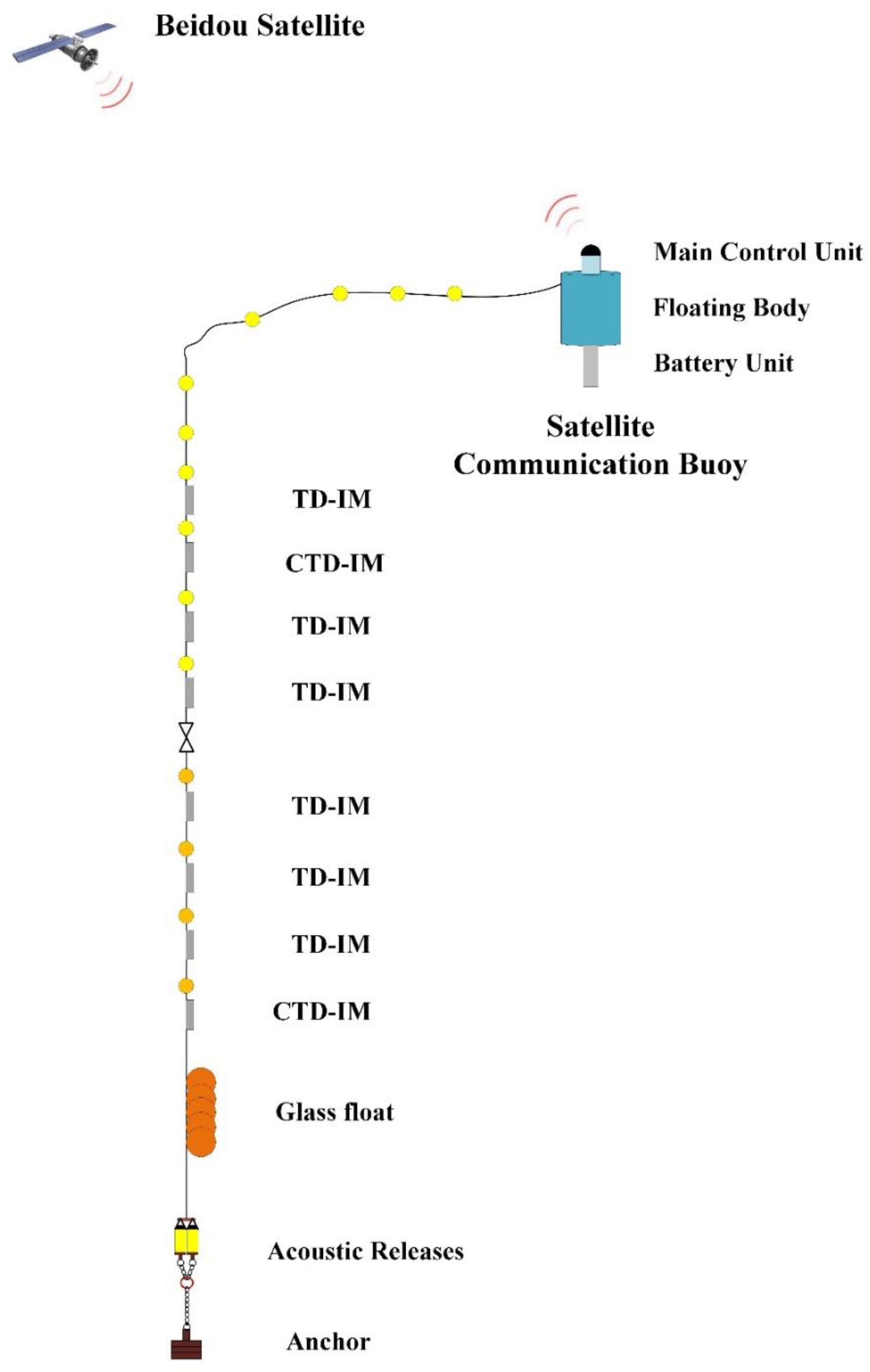
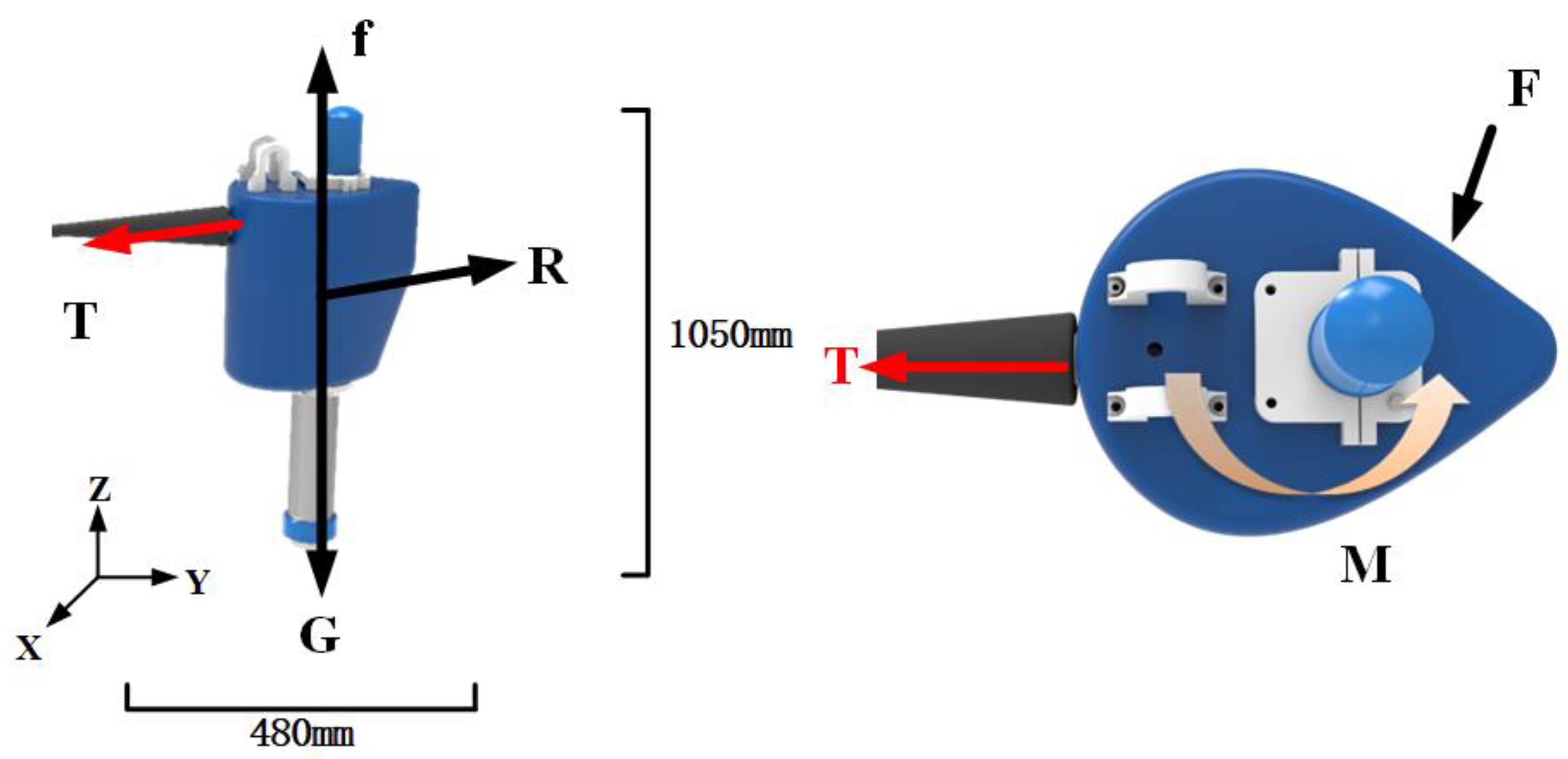

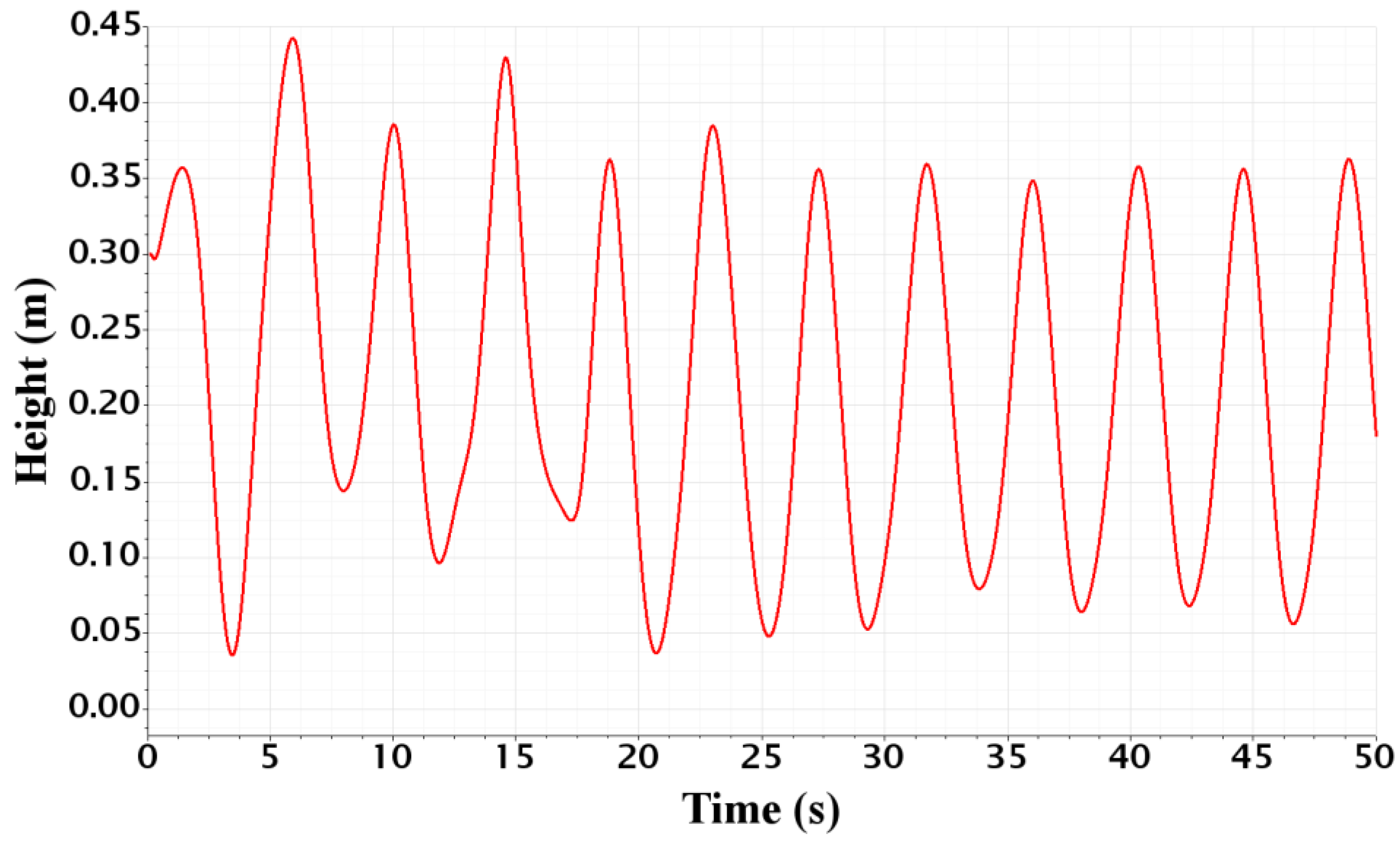


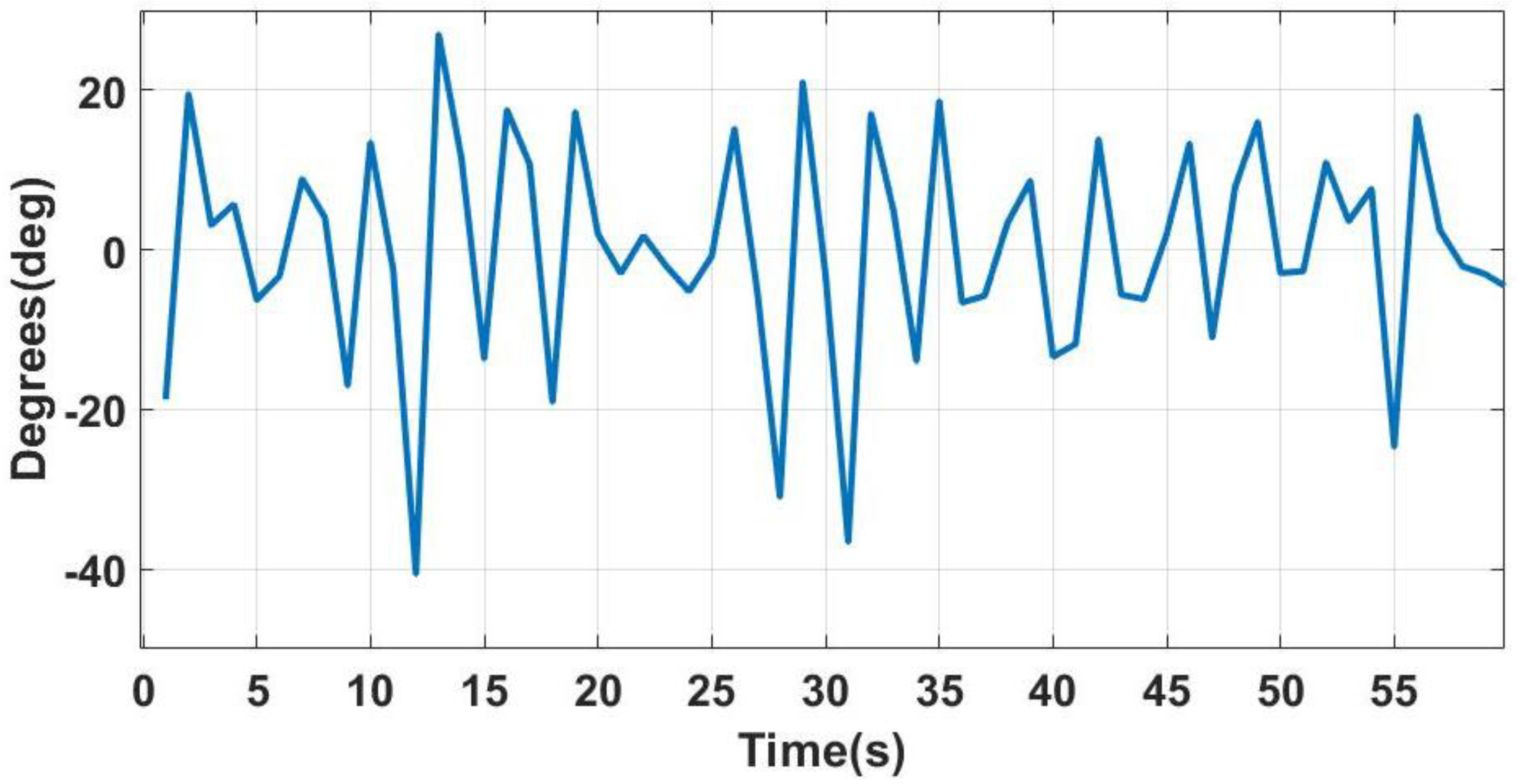
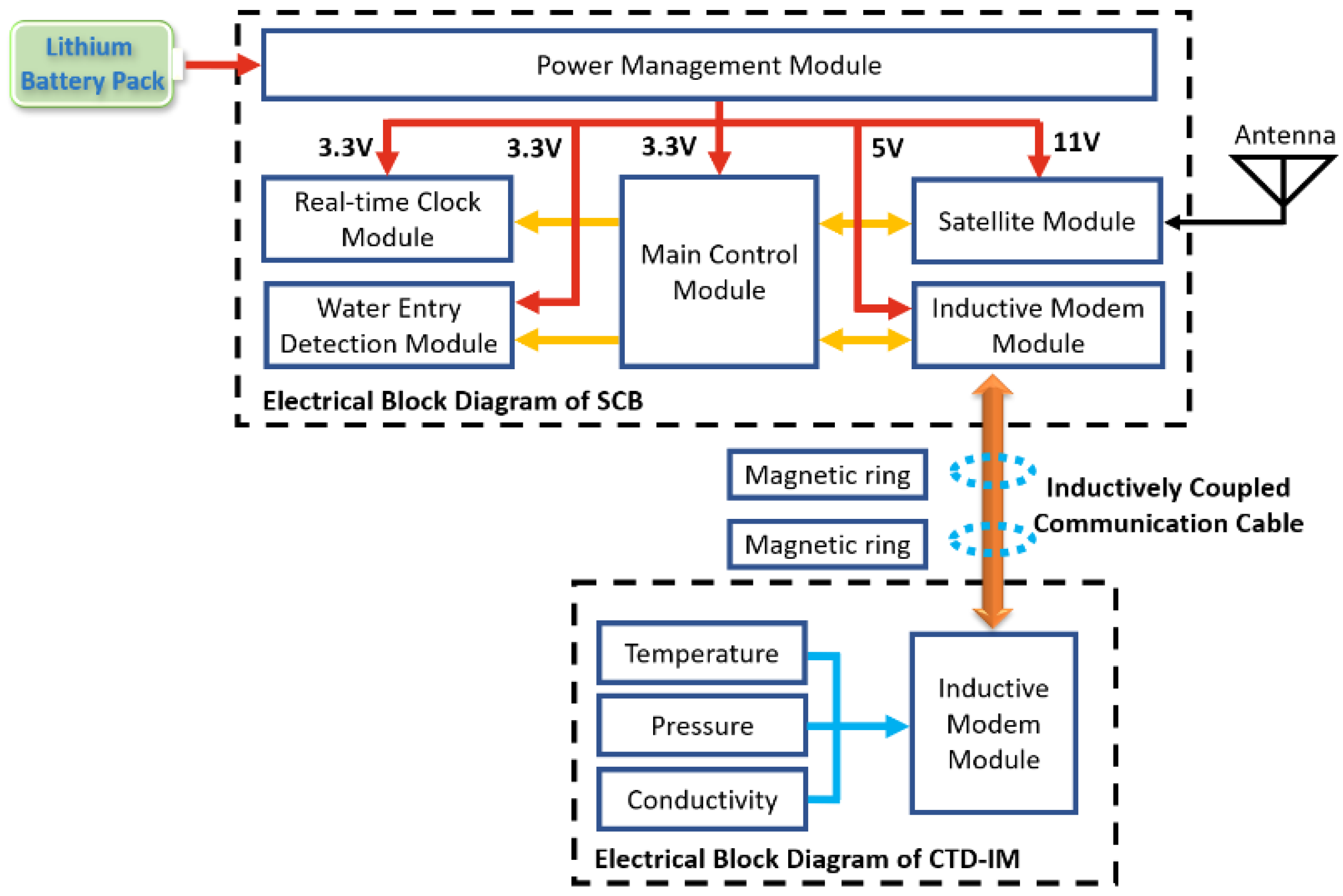
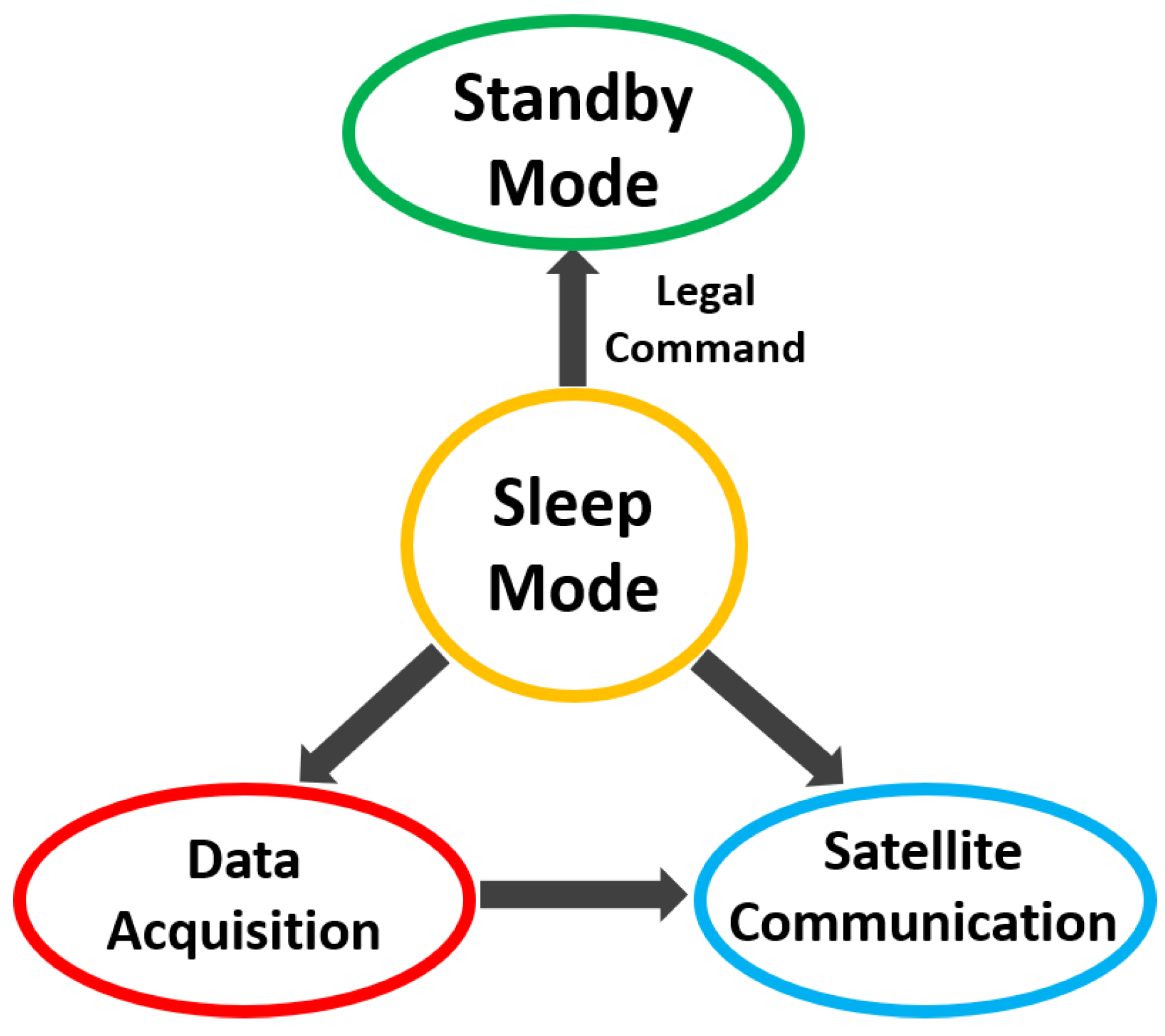
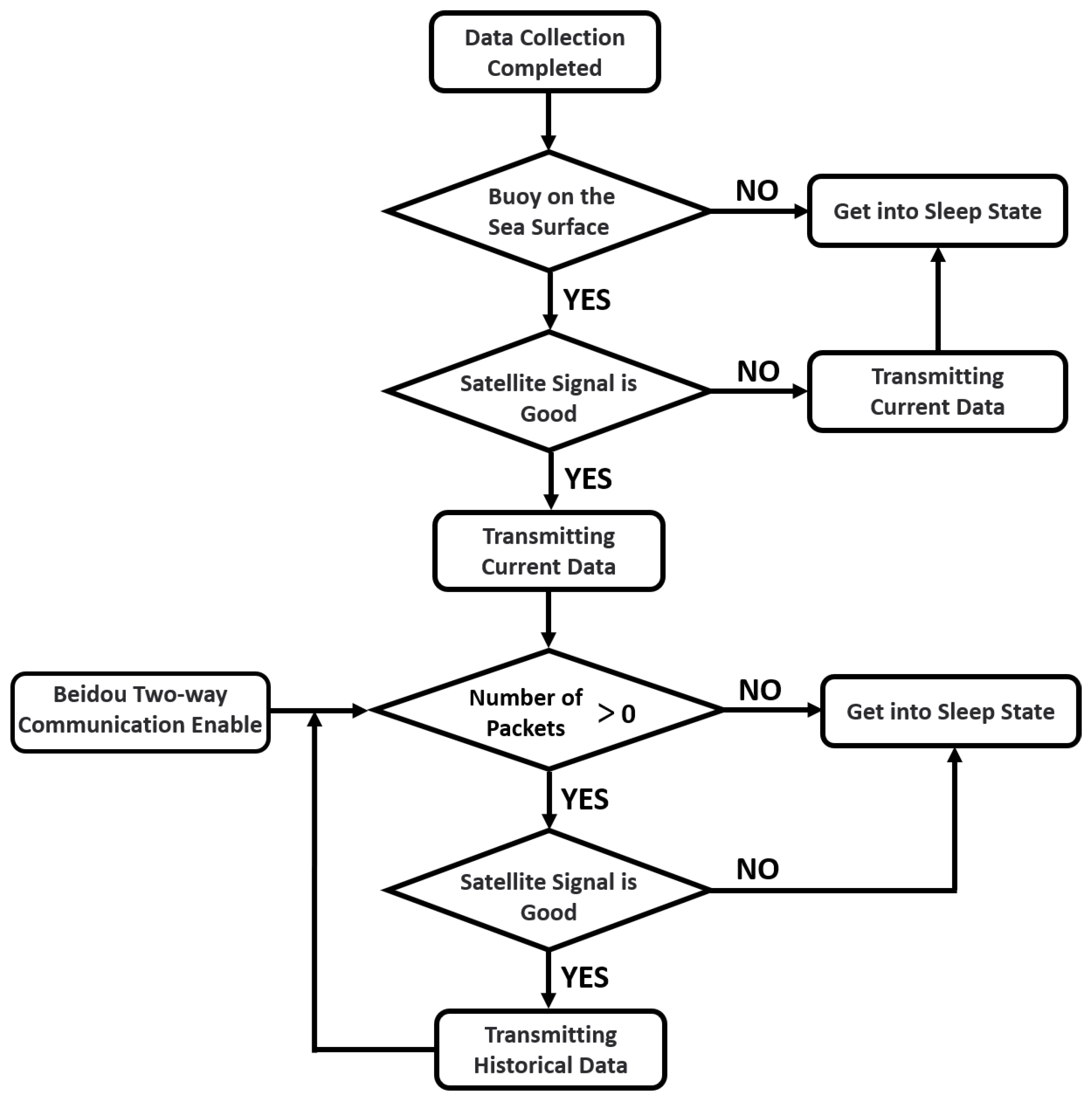

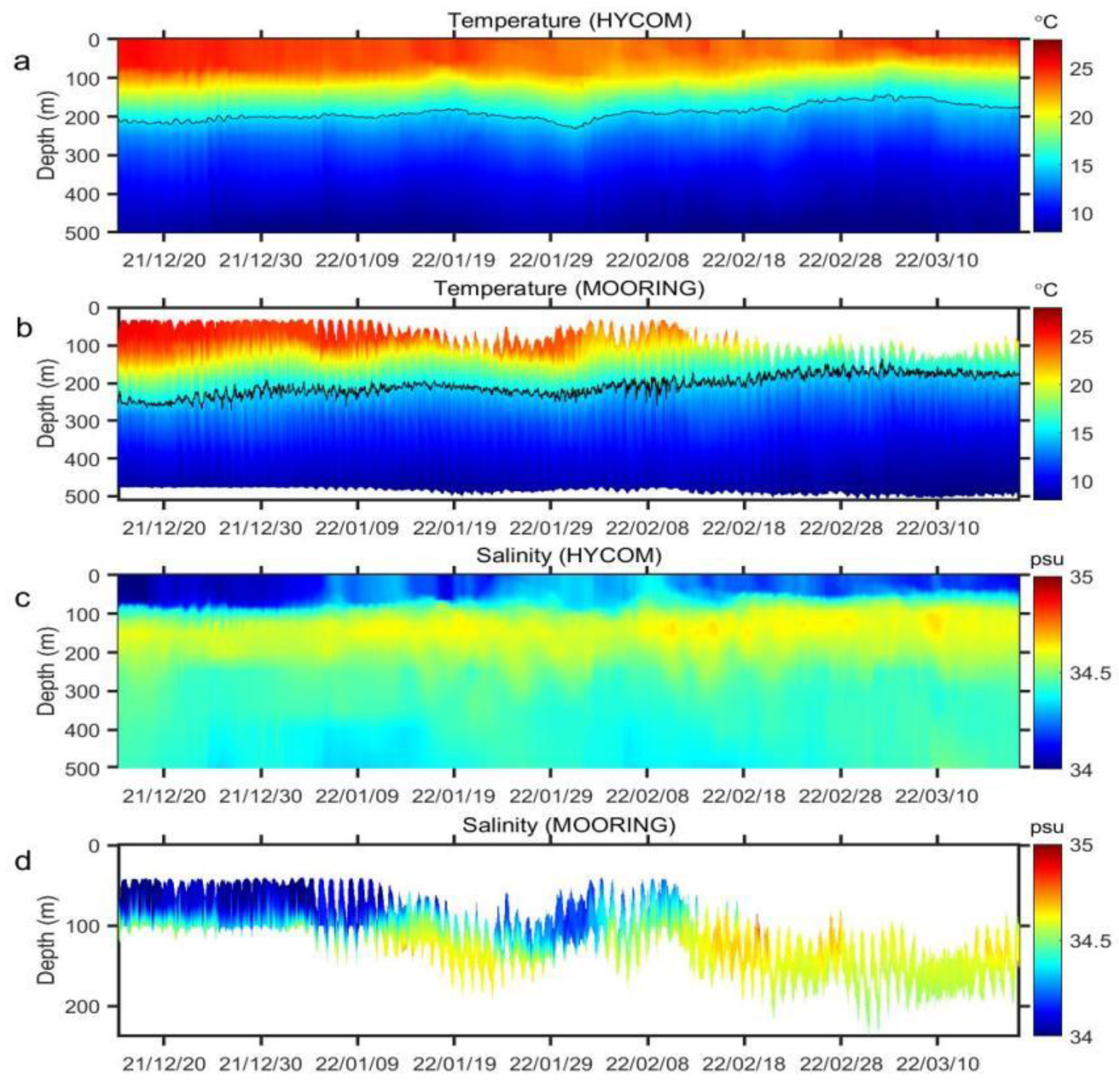
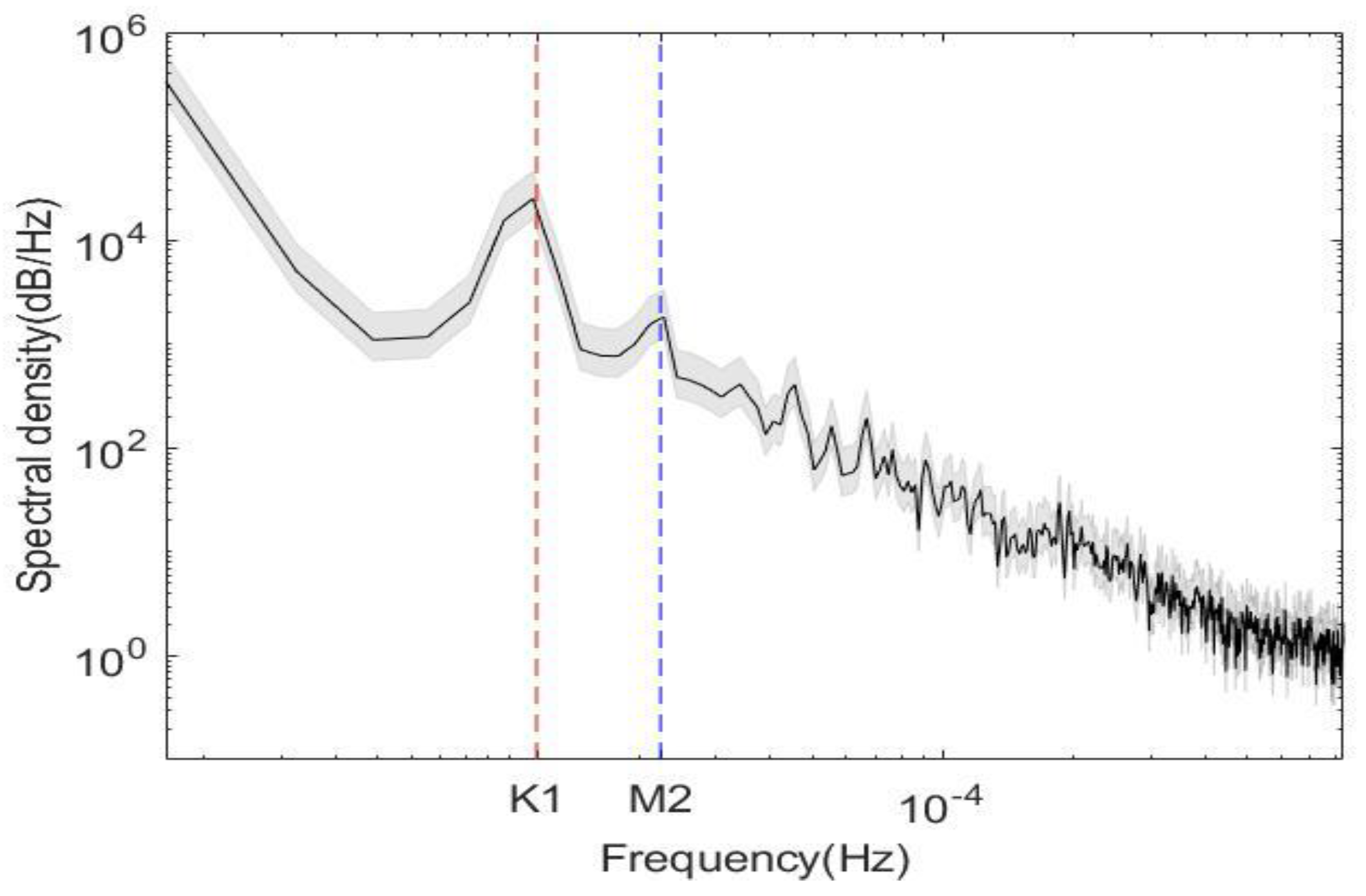
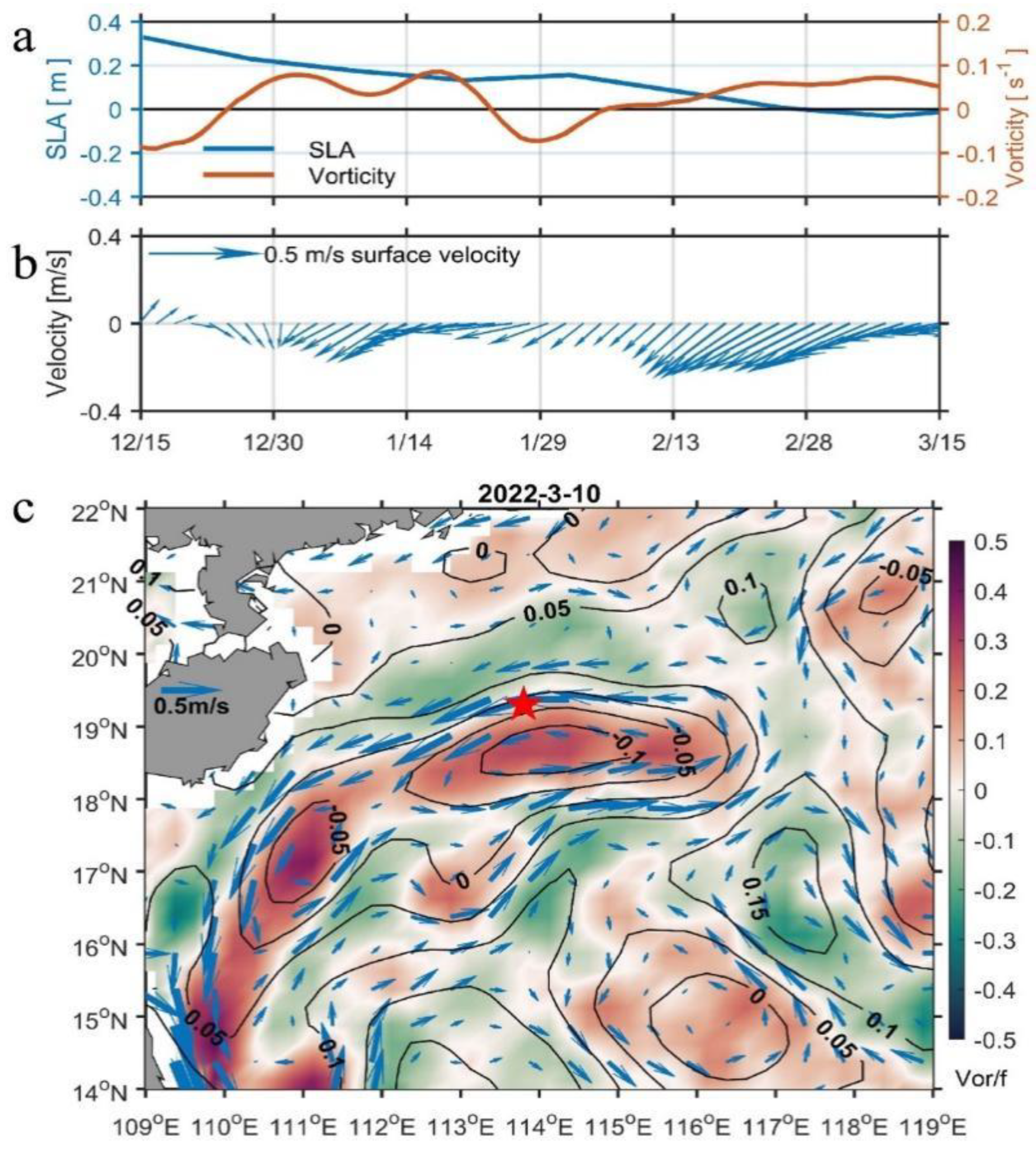
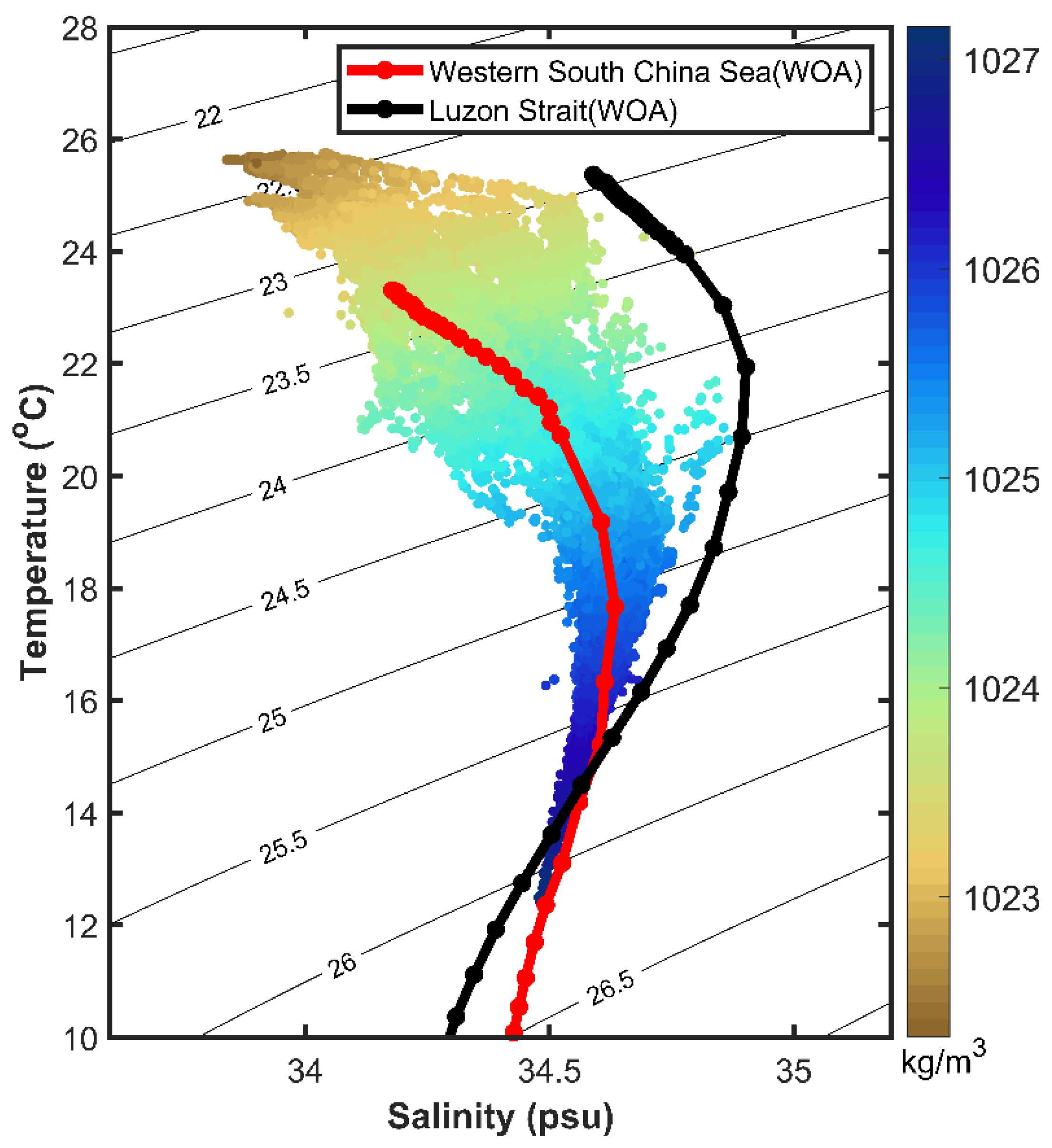
| Sensor Type | Depth/m |
|---|---|
| TD | 40 |
| CTD | 50 |
| TD | 60 |
| TD | 70 |
| CTD | 80 |
| TD | 90 |
| CTD | 100 |
| TD | 110 |
| TD | 200 |
| TD | 300 |
| TD | 400 |
| TD | 500 |
Publisher’s Note: MDPI stays neutral with regard to jurisdictional claims in published maps and institutional affiliations. |
© 2022 by the authors. Licensee MDPI, Basel, Switzerland. This article is an open access article distributed under the terms and conditions of the Creative Commons Attribution (CC BY) license (https://creativecommons.org/licenses/by/4.0/).
Share and Cite
Luo, P.; Song, Y.; Xu, X.; Wang, C.; Zhang, S.; Shu, Y.; Ma, Y.; Shen, C.; Tian, C. Efficient Underwater Sensor Data Recovery Method for Real-Time Communication Subsurface Mooring System. J. Mar. Sci. Eng. 2022, 10, 1491. https://doi.org/10.3390/jmse10101491
Luo P, Song Y, Xu X, Wang C, Zhang S, Shu Y, Ma Y, Shen C, Tian C. Efficient Underwater Sensor Data Recovery Method for Real-Time Communication Subsurface Mooring System. Journal of Marine Science and Engineering. 2022; 10(10):1491. https://doi.org/10.3390/jmse10101491
Chicago/Turabian StyleLuo, Peng, Yuanjie Song, Xiaoyang Xu, Chen Wang, Shaowei Zhang, Yeqiang Shu, Yonggui Ma, Chong Shen, and Chuan Tian. 2022. "Efficient Underwater Sensor Data Recovery Method for Real-Time Communication Subsurface Mooring System" Journal of Marine Science and Engineering 10, no. 10: 1491. https://doi.org/10.3390/jmse10101491
APA StyleLuo, P., Song, Y., Xu, X., Wang, C., Zhang, S., Shu, Y., Ma, Y., Shen, C., & Tian, C. (2022). Efficient Underwater Sensor Data Recovery Method for Real-Time Communication Subsurface Mooring System. Journal of Marine Science and Engineering, 10(10), 1491. https://doi.org/10.3390/jmse10101491






